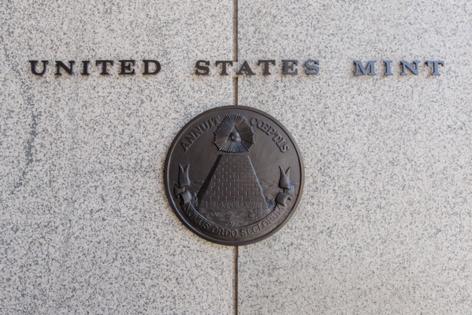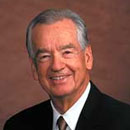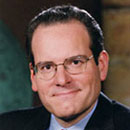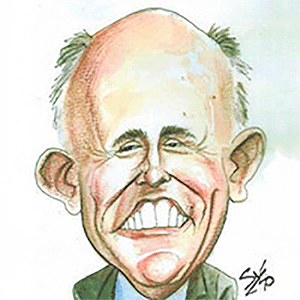Trump's plan to eliminate the penny follows sharp drop in US coin demand at Philadelphia mint
Published in Business News
PHILADELPHIA — Congress, the Supreme Court, the central bank, the President's House — all national institutions that graced Philadelphia when it was the nation's capital in the 1790s — left long ago for Washington, D.C.
But not the U.S. Mint. The modern successor to the early coin-striking center built on Seventh Street in 1792 is now the world's largest coin-making factory.
The Philadelphia mint has been in its blank-walled home in Old City between Fourth and Fifth Streets, Race to Arch, since 1969, employing several hundred federal workers. It's a popular tourist attraction.
But for how much longer? Echoing a proposal by his government-cutter Elon Musk, President Donald Trump said this week that he has told the government to stop minting pennies, copper-clad zinc disks stamped with Lincoln's head, the year, and the Lincoln Memorial. The President appoints the Treasury Secretary, currently Scott Bessent, who has the power to decide which coins to mint, of the designs authorized by Congress.
Pennies account for more than half the coin production in Philadelphia and the other, slightly smaller mint in Denver.
Trump's order follows a sharp decline in Americans' demand for pocket change.
The challenge isn't just that, according to the Mint's own data, each penny costs nearly 4 cents to make — and nickels cost around 14 cents each. According to its financial reports, the Mint has covered losses from its small change with profits from sales of gold and silver bullion from smaller facilities in San Francisco and at West Point, N.Y., and from commemorative coins, some also made in Philadelphia.
A larger question is how much longer Americans will want or need the loose change that's been made in Philadelphia since the dawn of the Republic, continuing after gold went out of general circulation in the 1930s and silver in the 1960s.
Money trends
Demand for new U.S. coinage fell from a peak of 15 billion coins in fiscal 2021 to less than 6 billion last year, the U.S. Mint said in its most recent annual report. Americans are moving away from paper money more slowly. Currency use rose less than 1% last year, the smallest rise in at least 20 years, according to Federal Reserve data.
The drop in coin demand accelerated in the last fiscal year, and that's reflected in the drop in production, Kenyatta Fletcher, a 25-year Mint veteran who serves as its chief financial officer, said in a letter contained in the annual report.
In an Oct. 2022 report, "U.S. Coin Circulation: The Path Forward," the Fed and the Mint noted the "erosion" of coin use for basic transportation — replaced by EZpass at toll booths, and by credit, debit and other payment cards at parking meters and public transit systems such as SEPTA — as "the largest contributor" to the drop in coin use. It also cited the replacement of cash by payment cards at other former cash users, such as casinos and laundromats.
The rise of smartphone payment apps, mentioned only in a footnote of that 26-page report, has since accelerated.
The trend away from cash was "already underway" when COVID-19 drove retail shoppers to online shopping and is not expected to reverse, the Fed-Mint report noted.
Even banks have been rejecting coins, as they closed branches, removed coin-counting machines from surviving branches, and in some cases refused to take coins for payment, the report said.
Cutting back or ending the penny could save up to $100 million a year for the Mint, the report concluded.
The drop in coin production
Mint data show that combined Philadelphia and Denver production of pennies, nickels, dimes, quarters, half-dollars, and dollars for general circulation peaked at 17 billion in 2015, with pennies accounting for more than half the total. That number fell every subsequent year to 11.4 billion in 2023 — then tumbled to just 5.6 billion in fiscal 2024 (through last June 30).
Pennies remained more than half the total; for other coins, the mix shifted. The Mint made more quarters than dimes for the first time in 2024, and production of the John F. Kennedy half-dollar rose from 2015 to 2023 in absolute terms as other coins fell — until last year, when production of the relatively popular 50-cent coin fell, too.
While the agency's production of coins has dropped two-thirds since 2015, the Mint reported total employment at all its locations rose during that period, to nearly 1,700 on Dec. 31, from 1,600 nine years earlier.
Philadelphia officials haven't considered a possible mint closure in the near future and have made no recommendations for new uses, said Nagiarry Porcena-Meneus, spokesperson for the city Commerce Department.
City zoning documents show that the two-block property could be redeveloped as apartments, labs, stores, public projects, or offices.
©2025 The Philadelphia Inquirer, LLC. Visit at inquirer.com. Distributed by Tribune Content Agency, LLC.












Comments